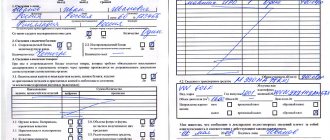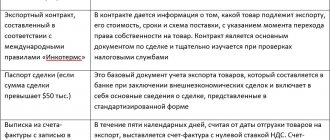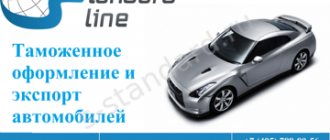Good afternoon, dear reader.
This article will discuss the import of a car into Russia from another state. The situation is that a car that is not registered in the Russian Federation crosses the border.
It should be noted right away that import can be temporary (for a limited period, after which the car leaves the country) or permanent. In some cases, the owner will have to pay customs duties, recycling fees, and register the car, and in others - not.
Note. This article deals only with the import of category B cars by individuals for personal use.
Importing a car into the EU for a short period of time
You can import a Russian, Ukrainian, Belarusian, or Kazakh car into the territory of the European Union by applying for temporary import. To do this, you will fill out the appropriate declaration at the border. However, your car will not be able to stay in the country for more than 6 months. The same legislative rule applies to foreign cars in Russia.
This option is suitable for people who have a residence permit in Europe and live in two houses, periodically coming to the EU. However, you need to ensure that the car does not stay in a European country for more than 6 months.
You can import a car for a longer period, but this must be confirmed by documents. For example, you are going to work under a contract, on a long business trip. If you are moving for permanent residence, then you will only be able to drive around Europe in your favorite car for six months. This is a general rule and must be followed.
Renewal of permit
The UVTS is extended at the customs authority unit at the place of stay or registration. The certificate is extended for the duration of the planned movement of vehicles on Russian roads. The extension period cannot exceed 3 months. Extension of the term is not subject to fees.
Persons with temporary registration are allowed to extend their import for a period not exceeding the duration of temporary registration in the country.
When transporting vehicles outside the state, the UVTS must be handed over at the checkpoint.
What documents are needed for renewal:
- Citizen's passport with a registration note.
- Certificate confirming the registration of the vehicle.
- Compulsory car insurance policy.
- Certificate for temporary import of transport.
- Notarized power of attorney (if available).
- Copies of the above documentation.
If you exceed the allowed period and subsequently do not apply for an extension, you face a large administrative fine.
In case of delay, as well as in case of violation of registration rules, the vehicle is placed in an impound lot until the owner pays all the necessary state fees.
Is it possible to take the car with you to Europe forever?
So, you have a residence permit in Europe or citizenship ready, and you are going to move to your favorite country for permanent residence. What about the car? There may be several in your family. There are only two options, and both are possible.
- Carry cars with you. It happens that people become attached to even inexpensive cars and do not want to part with them. What can we say about the owners of luxury cars who do not want to part with their favorites?
- Sell a car in Russia and buy a new one in Europe. No matter how cool the car is, you will be able to find the same or similar model on the European market. And thus avoid problems with transportation
Practice shows that our clients most often lean towards the first option, believing that it is quite simple. In fact, this is not always the case. Let's look at the problems you may encounter.
Import of a car by a citizen of the Russian Federation
If a citizen of the Russian Federation lives in a foreign country, he has the right to arrive in a car registered there. But you will have to pay customs duty. As for registration with the State Traffic Safety Inspectorate, it is not required for stays in Russia of up to 1 year. If it is larger, you will have to register the vehicle.
Not only the owner, but also members of his family: spouse, children, parents have the right to drive a car from a foreign country. Also, as a general rule, maintenance and repair of vehicles is allowed if we are talking about unauthorized persons. It is prohibited to transfer control to citizens who are not relatives.
Example:
A citizen of the Russian Federation lives in France. He decided to visit his relatives for two months in his own car, registered at his place of residence, in Russia. In this case, he needs to pay a fee, but he does not have to register the car.
Double customs clearance possible
If you bought a European car in Russia and want to transport it to Europe, you will pay twice for customs clearance. The first time is when purchasing (the cost of customs clearance is included in the price of the car), the second time is when moving.
Plus you will pay a decent amount of duties - they differ in each country. For example, in Germany, the customs duty on passenger cars is 10%, on motorcycles up to 250 cm3 - 8%, above this volume - 6%. Next, you will have to pay import turnover tax, which is equal to 19% of the cost of the car. Each country has conditions that allow you to avoid paying duties. For example, in France you need to own a car for at least 6 months.
Thus, customs clearance can cost you almost a third of the cost of your favorite “iron horse”. Next, you will have to re-register your car in Europe and receive a European license plate.
Required documents
The list of documents that will be needed to register the UVTS is as follows:
- Passport.
- A document confirming the right to own or drive a car.
- A valid MTPL car insurance policy for the entire duration of the car’s stay in Russia.
- Customs declaration form TD-7.
In addition, the car must be declared. To submit the declaration you will need the following documents:
- Civil and foreign passport of the car owner.
- Foreign registration certificate for a car.
- A document that confirms the fact of purchase of the vehicle.
- Customs declaration TD-6.
When is it worth taking your car with you to Europe and clearing customs?
- If you recently purchased a car from a dealership and it has low mileage. You will hardly be able to sell it for an adequate price in Russia
- If the car is really dear to you or your family
- If the car is a rarity and has collectible value
In all other cases, it is better to sell the car at home and buy a new one upon arrival in Europe, since the time and money spent on customs clearance will be extremely large.
However, the following fact must be taken into account. Now two absolutely similar cars in Europe and Russia differ in price. A car produced and purchased by you in the EU will cost a little more than one produced in the Russian Federation. By about 2-3%.
What to do if export is not possible
Sometimes situations arise in which it is impossible to remove vehicles on time due to some reasons. This could be a traffic accident, car theft, urgent vehicle repairs, or other reasons. Then the owner must submit an appeal to the State Customs Committee in advance so that they take the necessary legal measures.
Based on your appeal, the committee makes a decision and has the right to close the temporary import of the car. This data will be transmitted to the customs authority that issued the certificate. Information must be received no later than 15 days from the end date of the UVTS.
Import closure means:
- renewal of the certificate;
- information about violations of the law provided by the relevant authorities;
- re-export of a vehicle;
- re-registration in a different manner from the import procedure.
If the information does not reach the controlling customs authority on time, the vehicle will be marked in the database as not exported. In other words, the car will be put on the All-Russian wanted list.
In a situation where movable property imported into the country is not exported on the expiration date of the certificate or the permit is not renewed, then the appropriate payments will begin to be collected from the owner of the vehicle.
Transportation stages
- Stage I. Remove the car from registration with the traffic police. Be sure to indicate that you are taking the car abroad and do not intend to return it back. The PTS will give you a special note about this. You will also receive metal transit numbers
- Stage II. Take out insurance for travel in the countries through which the car will travel
- Stage III. Move the car yourself or use the services of carriers
- Stage IV. Pay customs duties, duties
- V stage. Pass the technical inspection already in Europe. You may be required to provide a certificate of vehicle homologation and compliance with EU environmental requirements
- Stage VI. Register at your new place of residence and receive new numbers. Buy European insurance
Is it possible to transfer a car to another person?
As a general rule, transferring an unregistered vehicle into the hands of another person is strictly prohibited. But if you delve into the law, then this restriction applies only to persons of a different nationality. That is, if the documented owner of the vehicle is a German or Frenchman, then he has no right to give his car into the hands of a Russian.
This principle also applies in reverse. Therefore, if a person has dual citizenship, then the law will not be broken when transferring a car to his compatriot. This aspect is especially important for intermediaries who transport equipment from the border point to the point of sale (including when selling a car for spare parts).
Sell the old one here and buy a new one there
In addition to the lack of financial costs and problems with customs clearance, there are other arguments in favor of this option.
The European market for new cars is larger than the Russian one. Dozens of attractive models that are produced in Europe are simply not brought to Russia by dealers. This way you will have more choice.
In Russia, you are likely to buy a car of a famous brand, produced here. However, the notorious build quality is often worse than in factories of the same brands located in Europe. Why this happens is a rhetorical question. Nevertheless, the fact remains: a car produced in Europe is better in build quality than its Russian counterpart.
Completion of the temporary import procedure
The procedure for temporary import of goods may result in re-export, which implies the removal of previously imported cargo outside the country or the placement of goods under customs procedures applicable to foreign goods (import, etc.).
There are several situations in which the regime of temporary import of cargo into the territory of the Customs Union or the Russian Federation may end:
- expiration of the maximum possible period of stay of the cargo on the territory of the state;
- refusal of the cargo owner to relinquish ownership rights to the product in favor of the country;
- processing of cargo at the customs point in accordance with approved regulatory documents.
The regime of temporary import of various goods ends in accordance with Article 224 of the EAEU Customs Code. There is also the possibility of termination of admission if the products or cargo are lost or destroyed for any reason, which can happen after a fire, accident, catastrophe and other emergency situations.
To do this, you must provide supporting documentation to government authorities about the incident and a previously obtained permit for the temporary import of cargo. The declarant may prematurely stop temporary importation.
If you have any problems with temporary import registration or you want to entrust this process to professionals, then you can safely use the services of the RTL company. We can undertake the full range of services for processing temporary importation or carry out work on specific tasks. To contact us, remember the special form on the website, and we will provide professional advice as soon as possible.
Which option should I choose?
There is no universal recipe or advice. In each specific case, you need to calculate the amount of financial losses. And they will be there anyway. You will either have to lose value when selling the car. Or pay extra for customs clearance in Europe. The only question is which of these options will be cheaper and more convenient.
We still recommend purchasing a new car in Europe. At a minimum, you will save time on customs procedures, which have many nuances that may not be understood without an experienced local lawyer. And as practice shows, in most cases this is the best option.
Customs payments for temporary import
In accordance with the current legislation governing the temporary import procedure, there are two options:
1. Partial payment of import duties and taxes. At the same time, 3% is paid for each calendar month during which the customs procedure is valid. However, the total amount of customs duties and taxes paid should not exceed the amount of import customs duties and taxes that would be levied if the goods were placed under the release procedure for domestic consumption.
2. Without paying import customs duties. Only in relation to a certain category of goods, the temporary stay of which is determined by the decision of the Customs Union Commission dated June 18, 2010 No. 331 and the decision of the Council of the Eurasian Economic Commission dated December 20, 2017 No. 109 \..
Stop searching!
We already have everything you need!
- Best price
- All countries and modes of transport
- All types of cargo and goods
- Convenient and fast communication
+7 (495) 478-00-48
Svetlana Markova
Foreign trade specialist
Temporary import of equipment to Russia - features and advantages
Current legislation provides for partial and complete exemption of the declarant from paying taxes. According to paragraph 1 of Art. 221 of the EAEU Labor Code, the maximum service life of products should not exceed 24 months. Most often, goods and equipment are imported that are intended for use at sporting events, exhibitions, scientific research and conferences. Our company’s specialists will help you obtain permission to temporarily cross the customs border (import for a limited period) for equipment, and will help you avoid various difficulties and circumstances:
- the customs service may require a cash deposit when goods cross the state border (import) for a limited period;
- departments have the right and opportunity to require guarantees that the cargo is imported for a limited time;
- the procedure may be difficult if government officials are unable to identify the cargo and goods, which gives grounds to refuse import;
- equipment may be classified as dangerous, which requires additional permits to carry out the temporary import procedure;
- When transferring equipment, the public service will require the signature of guarantors who are citizens of the Russian Federation.
To solve all problems when temporarily importing equipment into Russia, it is recommended to contact specialists. We provide a free consultation with a customs broker, which will help you determine the need for the service. The procedure for importing equipment and crossing the border is regulated by current regulations, as well as federal laws. With our help, you can eliminate your obligations and get a number of benefits:
- permission to place goods under the procedure for temporary admission of goods from government services;
- installments for payment of fees when importing cargo;
- possibility of exemption from duties - 3% per month of total payments.
Goods can be imported without consumables, as well as samples, as they do not fall under the relevant procedure. Our company’s specialists will help you import and temporarily import any equipment you may need. Import services are provided to individuals and legal entities. A comprehensive analysis of the task and timely completion of work on transporting equipment on the territory of the Russian Federation is carried out.
Procedure for paying customs duties for temporary import of goods
The condition for the emergence of obligations to government bodies in the form of fees and duties arise when filing a declaration. When an importer needs to import goods/products/equipment into the Customs Union states, difficulties and misunderstandings immediately arise regarding what fees need to be paid. The process of paying fees for temporary border crossing or importation (admission) is described in detail in current regulations, namely in Art. 223 Labor Code of the EAEU. Main points and features of the established procedure for paying fees and taxes:
- if partial payment of payments was made before temporary importation, then it begins to be calculated only in the period from the moment of registration of the cargo until the end of the procedure;
- goods may fall under a special import regime without paying payments in favor of government services, but in this case it is necessary to adjust the declaration - submit an application for payment;
- payment of taxes can be divided into a monthly payment of 3% from the date of registration of the temporary import procedure or pay the entire amount at once;
- when the customs regime (import) procedure has been suspended, the payment of fees (monthly payments) is also stopped.
The peculiarity of calculating the amount of payments is that taxes paid should not exceed accrued taxes. Moreover, if the declarant pays more than was calculated, the excess amount will not be returned. There is a list of goods that are exempt from any payments for temporary admission upon import:
- humanitarian assistance from any states and legal entities;
- technical means, goods and equipment for eliminating the consequences of emergency situations, incl. man-made and natural disasters;
- means for holding cultural events - concerts, sports competitions, etc.
Terms and documents for temporary import into Russia
The list of goods temporarily imported with full conditional exemption from customs duties and taxes, as well as the conditions for such exemption, including its deadlines, are determined in accordance with international treaties of the member states of the customs union and (or) decisions of the Customs Union Commission.
Temporarily imported goods with full conditional exemption from customs duties and taxes are used within the territory of a member state of the customs union, whose customs authority placed these goods under the customs procedure of temporary import (admission), unless otherwise specified
According to paragraph 1 of Art. 221 of the EAEU Labor Code, the maximum permissible temporary period of stay of goods on the territory of the CU countries is 2 years from the moment they fall under the appropriate regime. The Customs Union Commission may extend or shorten the period for the import of certain categories of goods and cargo. To extend the deadline for temporary transportation (import), the declarant must submit an application to government services with a clear description of the reasons for the request. In addition to the application, you must attach the following documents:
- detailed information and description of the reasons for the advisability of a request to extend the procedure for the temporary import of goods, as well as goods in the form of equipment;
- a copy of the declaration that was provided to the inspectors when crossing the state border (import);
- a copy of the updated declaration, if the cargo is exempt from paying taxes.
Permission to place goods can be obtained based on an application from the owner of the cargo or his authorized representative. The application must indicate the reasons and purposes of the temporary import procedure, information about the goods, as well as the carrier. The following documents must be submitted along with the application:
- a list of specific cargo properties that will help government officials identify goods during import and export;
- a list of events at which the imported equipment will be used;
- certificates that confirm the purpose of importing goods;
- data on the completion of other procedures, if the cargo was previously subject to such procedures;
- obligations to remove cargo after the expiration of the period for temporary movement of goods.
Government services have the right to request additional documents for temporary access that will help with cargo identification. The FCS may ask for clarifying information about the origin of products, information about the carrier, as well as goods and other products. A certificate of origin must be provided. You may need a document of compliance with the vehicle regulations. At the same time, certain categories of cargo and goods, which are various industrial wastes (in any form), products intended for human consumption, alcoholic and non-alcoholic drinks, semi-finished products, as well as raw materials, etc., cannot fall under the temporary import operation.






